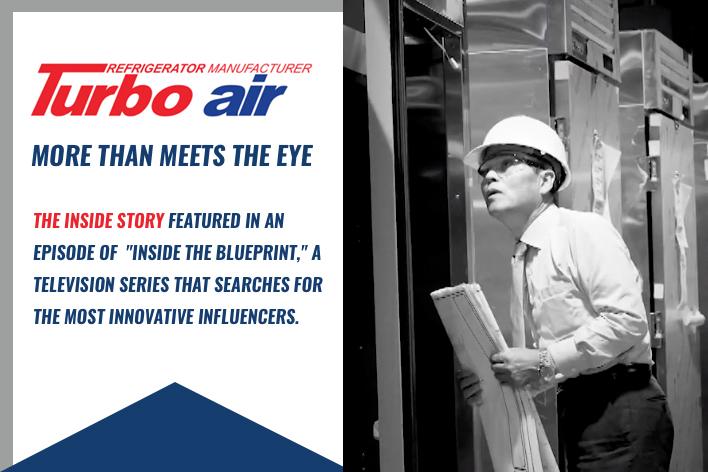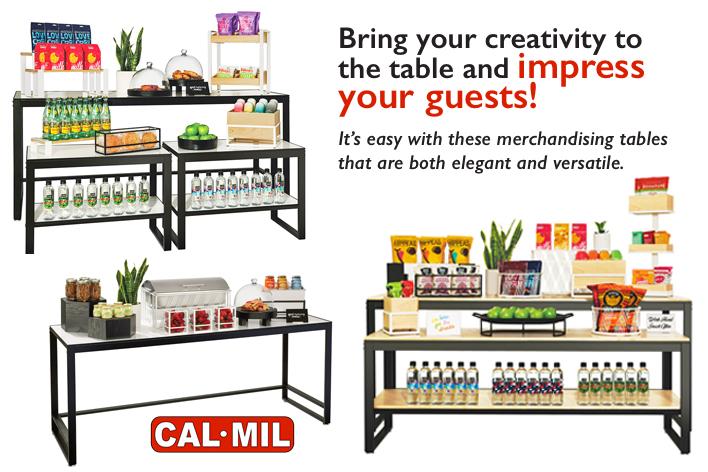
Why is Make-Up Air Important?
Have you ever noticed an overwhelming aroma from the kitchen when dining in a restaurant? Have you ever felt a rush of outdoor air when opening the door and entering a restaurant? How about a front door to the restaurant that is extremely difficult to open? If you answered yes to these questions, you have experienced a kitchen with an imbalanced ventilation system. Selecting the right make-up air solution will significantly impact the experience your customers and your employees have while in your restaurant.
Cooking applications create an abundance of smoke, grease, and odor, and the purpose of commercial hood systems is to exhaust a significant amount of this contaminated air continuously. Once the contaminated air has left the building, fresh air, commonly called “make-up air,” is needed to exchange the exhausted air.
While all food service operations share the same goal of replacing the air removed by the exhaust fan and maintaining proper balance by bringing fresh outdoor air back into the kitchen, solutions and units put in place for the make-up air process are not the same for all.
Selecting the correct make-up air solution for your kitchen is critical for your operation. Here are a few options to consider when designing for your space.
- Make-up air unit (MUA) –These units supply fresh, outdoor air to compensate for the air being exhausted from the space, typically the kitchen. In most applications, make-up air units are mounted on a rooftop, above the ceiling, or on a slab and may include heating and cooling functionality for space comfort.
- Rooftop unit (RTU) –These supply units take air from the space and a small percentage of outdoor air, temper that air mixture to a comfortable temperature, and supply it back. These units are mainly used to provide a comfortable environment in the dining area and work well in conjunction with a MUA in a kitchen.
- Dedicated Outdoor Air Unit (DOAS) – These units can supply substantial outdoor air while fully tempering the air provided, maintaining the desired temperature and humidity levels. An all-in-one package, these units can provide both the comfort and fresh air requirements of a kitchen and other adjacent spaces when applicable.
When is Make-up Air Required for Kitchens?
Most building codes require make-up air in any commercial kitchen operation to combat negative pressure and provide a safe and comfortable environment for all. Section 508.1 of the International Mechanical Code (IMC) states:
“Make-up air shall be supplied during the operation of commercial kitchen exhaust systems that are provided for commercial cooking appliances.”
While the Uniform Mechanical Code (UMC) states in section 511.3:
“The make-up air quantity shall prevent negative pressures in the commercial cooking area(s) from exceeding 0.02-inch water column”
Standard 96 of the National Fire Protection Association (NFPA 96) states in section 8.3.1:
“Replacement air quantity shall be adequate to prevent negative pressures in the commercial cooking area(s) from exceeding 4.9 Pa (0.02 in. water column).”
Make-up air may also be required in certain residential kitchens, like those that may be needed in assisted living care centers, fire stations, or daycare facilities. Section 505 of IMC states:
“Exhaust hood systems capable of exhausting in excess of 400 cfm shall be provided with make-up air at a rate approximately equal to the exhaust air rate.”
Aside from the code requirements, make-up air also plays a pivotal role in the function of an exhaust system. Without a make-up air solution, the exhaust fan’s continuous air removal from the space creates negative pressure in the building. An example of negative pressure is when opening doors in a restaurant or other commercial kitchen space becomes more difficult. This negative pressure can significantly diminish the performance of the exhaust fan, resulting in a drop in the contaminated air being exhausted by up to 30%. With this pressure imbalance leading to reduced effluent capture by the hood, it may seep into the seating area and consequently make for unhappy customers.
TYPICAL make-up air applications include a tempered make-up air unit in the back of the house to supply between 70% and 90% of the exhausted air directly. Additional RTUs then temper and supply the dining space and kitchen with clean air to make up the remaining air or enough to ensure a comfortable and safe environment for all.
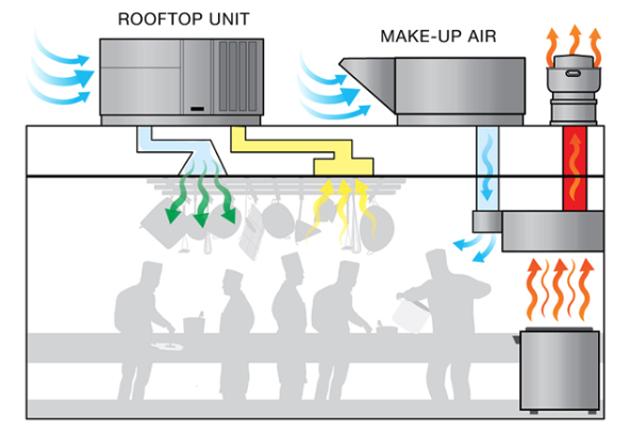
Figure 1: Traditional Restaurant Design
This setup is commonly seen in commercial kitchens – typically those with a traditional restaurant design with specific front-of-house (dining) and back-of-house (kitchen) operations.
Advantages of the traditional restaurant make-up air design:
- Provides marginal comfort control for the kitchen while supplying the required amount of make-up air.
- Dedicated units for both the make-up air and tempering functions.
- Simple and economical option for bringing in supply air to a kitchen.
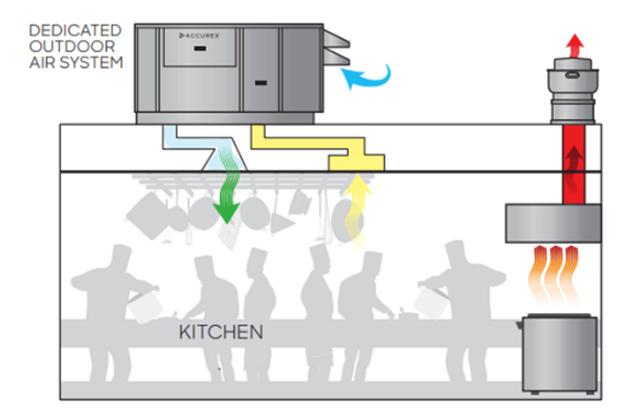
Figure 2: Restaurant Design with DOAS
This setup is becoming more common in certain applications – typically restaurants with a small footprint or open concept design that combines the kitchen and dining areas into a single space.
Advantages of the restaurant design with DOAS:
- Provides full temperature and humidity control and adjusts outdoor airflow to match building occupancy, reducing operational costs.
Make-Up Air Requirements in Other Occupied Spaces
While commercial kitchens require make-up air to replace the hood’s exhausted air, dining, and other occupied spaces in the building also need a certain amount of fresh air, the quantity of which is a factor of both the occupancy level and area of the space. Furthermore, current trends have encouraged increased ventilation with fresh air. Traditionally, RTUs have only been responsible for providing lesser amounts of required fresh air to non-kitchen areas, see Figure 3.
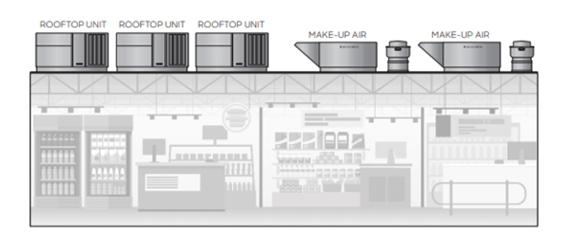
Figure 3: Typical Building Setup – RTUs for Marginal Outdoor Air Replacement
This traditional application’s limits become apparent with high occupancy buildings or other spaces that require additional outdoor air. RTUs are limited in the amount of outdoor air they can supply relative to the volume of air they need to recirculate. Such buildings typically require multiple units, including additional make-up air systems, resulting in oversupply and oversized ductwork. These applications would be better suited with a DOAS unit, see Figure 4.
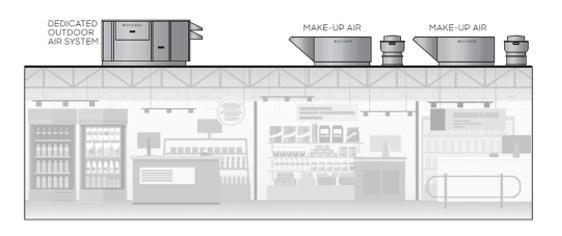
Figure 4: High Volume Operation – Building with Multiple MAUs and DOAS
Figure 4 shows multiple systems that can provide both the comfort control of an RTU and the required outdoor air to the space. You can simplify the space by replacing several RTUs with fewer make-up air units and one DOAS, simplifying controls and reducing installation costs.
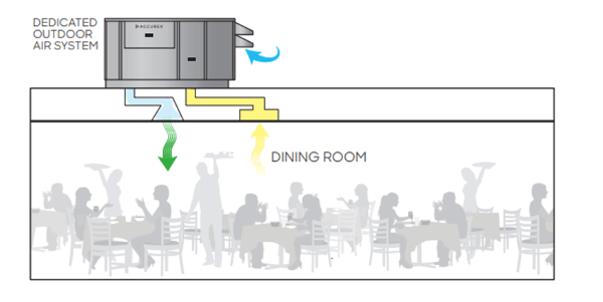
Figure 5: High Occupancy or Other Building Requiring Significant Outdoor Air – DOAS
Figure 5 illustrates the better option to simplify a space with a high occupancy system by replacing multiple RTUs and make-up air units with a single DOAS unit, streamlining control sequences, and reducing installation costs. One DOAS unit provides full temperature and humidity control with fewer roof penetrations and power runs and reduces the footprint on a building’s roof.
Improved Comfort Control with Make-Up Air Units
Past make-up air units were commonly configured with marginal tempering options. In most cases, a kitchen’s make-up air unit was untempered or just included heat. While untempered options are a highly economical solution, their lack of comfort control must be resolved through secondary units, or otherwise risk an uncomfortable and sometimes hazardous environment.
With current trends towards reducing employee turnover and providing a better working space, make-up air solutions with greater tempering controls are becoming more common. Comfort control options in typical make-up air units are expanding, including direct or indirect gas, hot water, steam, or electric heat, and evaporative, direct expansion, or chilled water cooling.
Heating and cooling setpoints (the outdoor temperature at which the heating and cooling functions initiate) are just as critical as the type of tempering provided on a unit. For instance, a unit equipped with cooling is not effective if it does not begin cooling until the outside air reaches 85°F. Therefore, it is equally important that a unit not only has tempering but is also capable and configured to provide that tempering once the outdoor air becomes uncomfortable. The International Mechanical Code reinforces the necessity for comfort in kitchens, as it states in section 508.1.1:
“The temperature differential between makeup air and the air in the conditioned space shall not exceed 10°F except where the added heating and cooling loads of the makeup air do not exceed the capacity of the HVAC system.”
Integration to Kitchen Controls
Just as codes require make-up air in commercial kitchens, they also dictate how kitchen make-up units operate with respect to the rest of the kitchen ventilation system. IMC 508.1 states:
“Mechanical make-up air systems shall be automatically controlled to start and operate simultaneously with the exhaust system.”
Make-up air units are required to be tied into the kitchen control package, which is connected to the exhaust fan, hood sensors, and fire extinguishing system. This connection ensures the entire ventilation system operates together and in accordance with code. Furthermore, kitchen control packages configured for variable volume, a system capable of adjusting exhaust fan and make-up air volumes as cooking loads change, are becoming more common with “green” building trends and a greater emphasis on operational cost savings. With codes in many cases requiring these systems to provide airflow volume reductions of 50%, it is essential to ensure both the exhaust and make-up air can modulate their speed to meet those levels. Moderating speed is critical, especially on the make-up air unit, as certain units are unable to lower their speeds while also maintaining their tempering functionality.
Lastly, be aware of local code requirements that may not exist in the national code books. For example, certain jurisdictions in Minnesota require proving exhaust fan airflow before the make-up air can even initialize.
Summary
Make-up air is a critical component of commercial kitchen ventilation systems. Beyond being required by code, make-up air balances the space, provides comfort, and replaces exhausted air. The method of bringing make-up air into the space and the make-up air unit’s functionality is highly configurable to accommodate any kitchen. Make-up air units paired with rooftop units, or standalone DOAS units, are common configurations to ensure a properly ventilated commercial kitchen and dining area, providing increased comfort for staff and guests.
At Accurex, there is a better way to help simplify the most challenging kitchen ventilation system environments, from engineering to aftermarket support. As a Greenheck Group Company, they have over 70 years of manufacturing and engineering experience in air movement and control products. Accurex offers several configurable products and services tailored to meet your needs.
Engineering Simplicity into Kitchen Ventilation Systems
DISCOVER HOW SIMPLE THE ACCUREX WAY CAN BE AT ACCUREX.COM

